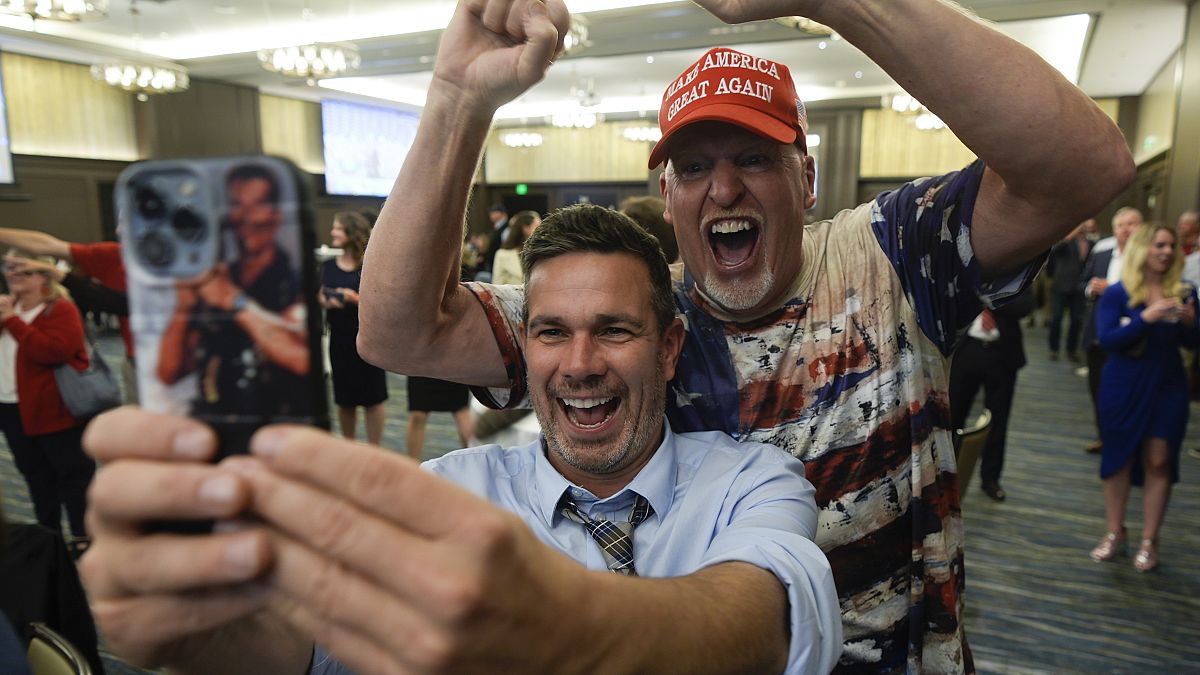The battleground state of Wisconsin played a pivotal role in the 2024 presidential election, with former President Donald Trump emerging victorious over Vice President Kamala Harris. Harris had hoped to secure Wisconsin, along with other states in the “Blue Wall,” in order to secure her path to the presidency. However, Trump’s narrow loss in Wisconsin in 2020 to Joe Biden fueled his determination to contest the results and ultimately win the state in the 2024 election.
The Harris campaign had focused heavily on Wisconsin, hosting numerous rallies in major cities and targeting small-town and blue-collar areas with a message of Midwestern values. Harris’ running mate, Minnesota Governor Tim Walz, also played a key role in reaching out to voters in Wisconsin. Despite their efforts, exit polls revealed that Trump had made significant inroads among traditionally Democratic-leaning groups, while Harris underperformed among female, black, and Hispanic voters.
The theory that Trump could be defeated by running up large majorities among black voters in Milwaukee and suburban women angered over abortion rights did not hold true. Instead, Trump’s campaign was able to resonate with a broader range of voters, leading to his victory in Wisconsin and thwarting Harris’ chances of winning the presidency. The results of the 2024 election highlighted the shifting political landscape and the challenges faced by the Democratic Party in appealing to a diverse electorate.
The outcome of the 2024 election in Wisconsin underscored the importance of understanding and connecting with voters across different demographics and regions. Despite the Harris campaign’s efforts to appeal to a wide range of voters in Wisconsin, Trump’s message resonated with a significant portion of the electorate. This highlights the need for political campaigns to adapt their messaging and strategies to effectively reach voters in key battleground states like Wisconsin.
Moving forward, both the Democratic and Republican parties will need to assess the results of the 2024 election in Wisconsin and draw lessons for future campaigns. Understanding the factors that contributed to Trump’s victory in Wisconsin, as well as the challenges faced by the Harris campaign, will be essential for shaping the strategies of both parties in future elections. The shifting political landscape in Wisconsin and other swing states will require a nuanced approach to campaigning and messaging in order to secure victory in future elections.
In conclusion, the outcome of the 2024 presidential election in Wisconsin serves as a reminder of the importance of understanding voter demographics, crafting effective messaging, and building strong campaign strategies. Despite the efforts of the Harris campaign to secure Wisconsin and the so-called “Blue Wall,” Trump’s victory in the state highlighted the challenges facing the Democratic Party. Moving forward, both parties will need to adapt to the changing political landscape in order to appeal to a diverse electorate and secure victory in future elections.











